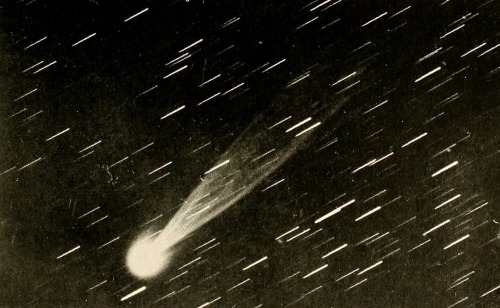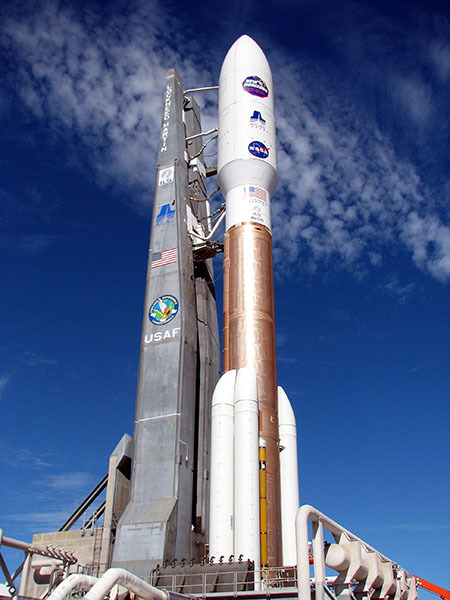A Beginner’s Star-book, An Easy Guide To The Stars And To The Astronomical Uses Of The Opera-glass,




A beginner’s star-book, an easy guide to the stars and to the astronomical uses of the opera-glass, the field-glass and the telescope, 1912
More Posts from Ad-astra-affecte-spe and Others

2023 September 28
The Deep Lagoon Image Credit & Copyright: Josep Drudis, Christian Sasse
Explanation: Ridges of glowing interstellar gas and dark dust clouds inhabit the turbulent, cosmic depths of the Lagoon Nebula. Also known as M8, The bright star forming region is about 5,000 light-years distant. It makes for a popular stop on telescopic tours of the constellation Sagittarius toward the center of our Milky Way Galaxy. Dominated by the telltale red emission of ionized hydrogen atoms recombining with stripped electrons, this deep telescopic view of the Lagoon’s central reaches is about 40 light-years across. The bright hourglass shape near the center of the frame is gas ionized and sculpted by energetic radiation and extreme stellar winds from a massive young star.
∞ Source: apod.nasa.gov/apod/ap230928.html

Venus and Pleiades







New Horizons – Scientist of the Day
The New Horizons spacecraft, bound for Pluto, blasted off its launch pad aboard an Atlas V rocket on Jan. 19, 2006.
read more...

NGC 2244, Within the Rose

The Sun’s corona during a solar-eclipse.
Two spiral galaxies, NGC 6040 and NGC 6039, are merging together at the right side of this Hubble image. NGC 6039 is seen face-on and is circular in shape. NGC 6040 seems to lie in front of the first one. In the lower-left corner, cut off by the frame, the elliptical galaxy NGC 6041 — a central member of the galaxy cluster that Arp 122 resides in — appears as light radiating from a point. The color image was made from separate exposures taken in the visible and infrared regions


Moon, Jupiter and its satellites
l Josselin Desmars l France l June 14, 2023


Galaxies can merge, collide, or brush past one another — each of which has a significant impact on their shapes and structures. As common as these interactions are thought to be in the Universe, it is rare to capture an image of two galaxies interacting in such a visibly dynamic way. This image, from the NASA/ESA Hubble Space Telescope, feels incredibly three-dimensional for a piece of deep-space imagery.
The subject of this image is named Arp 282, an interacting galaxy pair that is composed of the Seyfert galaxy NGC 169 (bottom) and the galaxy IC 1559 (top).
Credits: ESA/Hubble & NASA, J. Dalcanton, Dark Energy Survey, J. Schmidt
-
 funeraldrapes liked this · 1 month ago
funeraldrapes liked this · 1 month ago -
 parvori liked this · 1 month ago
parvori liked this · 1 month ago -
 robespeeair reblogged this · 1 month ago
robespeeair reblogged this · 1 month ago -
 robespeeair liked this · 1 month ago
robespeeair liked this · 1 month ago -
 soloveyko reblogged this · 1 month ago
soloveyko reblogged this · 1 month ago -
 un-simple-nefelibata reblogged this · 2 months ago
un-simple-nefelibata reblogged this · 2 months ago -
 un-simple-nefelibata liked this · 2 months ago
un-simple-nefelibata liked this · 2 months ago -
 dirawong liked this · 2 months ago
dirawong liked this · 2 months ago -
 kibasniper liked this · 2 months ago
kibasniper liked this · 2 months ago -
 mutationgirl liked this · 3 months ago
mutationgirl liked this · 3 months ago -
 quiggyballs reblogged this · 3 months ago
quiggyballs reblogged this · 3 months ago -
 tolls4thee reblogged this · 3 months ago
tolls4thee reblogged this · 3 months ago -
 princessmariella reblogged this · 3 months ago
princessmariella reblogged this · 3 months ago -
 propalahramota reblogged this · 3 months ago
propalahramota reblogged this · 3 months ago -
 propalahramota liked this · 3 months ago
propalahramota liked this · 3 months ago -
 fireworksgalaxy reblogged this · 3 months ago
fireworksgalaxy reblogged this · 3 months ago -
 keksy liked this · 3 months ago
keksy liked this · 3 months ago -
 newt250 reblogged this · 5 months ago
newt250 reblogged this · 5 months ago -
 kaho3238 liked this · 5 months ago
kaho3238 liked this · 5 months ago -
 lazarzwampertz liked this · 6 months ago
lazarzwampertz liked this · 6 months ago -
 sukebanghost reblogged this · 6 months ago
sukebanghost reblogged this · 6 months ago -
 sukebanghost liked this · 6 months ago
sukebanghost liked this · 6 months ago -
 purrusaurus reblogged this · 6 months ago
purrusaurus reblogged this · 6 months ago -
 disabledbisexualfroggy liked this · 6 months ago
disabledbisexualfroggy liked this · 6 months ago -
 thesora reblogged this · 6 months ago
thesora reblogged this · 6 months ago -
 something-writing liked this · 6 months ago
something-writing liked this · 6 months ago -
 the77snk liked this · 6 months ago
the77snk liked this · 6 months ago -
 prettylittleproblem reblogged this · 6 months ago
prettylittleproblem reblogged this · 6 months ago -
 strebcr-a liked this · 6 months ago
strebcr-a liked this · 6 months ago -
 champiionic reblogged this · 6 months ago
champiionic reblogged this · 6 months ago -
 towardenemy reblogged this · 7 months ago
towardenemy reblogged this · 7 months ago -
 paraselenewoman0 liked this · 7 months ago
paraselenewoman0 liked this · 7 months ago -
 christophrcloud reblogged this · 7 months ago
christophrcloud reblogged this · 7 months ago -
 bluest-hour liked this · 7 months ago
bluest-hour liked this · 7 months ago -
 un-stableee liked this · 7 months ago
un-stableee liked this · 7 months ago -
 stanestreet reblogged this · 8 months ago
stanestreet reblogged this · 8 months ago -
 bluejeansoul reblogged this · 8 months ago
bluejeansoul reblogged this · 8 months ago -
 un-cronopio liked this · 8 months ago
un-cronopio liked this · 8 months ago -
 glitterandthevoid reblogged this · 9 months ago
glitterandthevoid reblogged this · 9 months ago -
 internetspiders reblogged this · 9 months ago
internetspiders reblogged this · 9 months ago -
 creeeepyhorse reblogged this · 9 months ago
creeeepyhorse reblogged this · 9 months ago -
 misaga liked this · 9 months ago
misaga liked this · 9 months ago -
 thelibrarybat liked this · 10 months ago
thelibrarybat liked this · 10 months ago -
 missimbalance reblogged this · 10 months ago
missimbalance reblogged this · 10 months ago -
 bl4ckichx liked this · 10 months ago
bl4ckichx liked this · 10 months ago

★•Astronomy, Physics, and Aerospace•★ Original and Reblogged Content curated by a NASA Solar System Ambassador
204 posts

